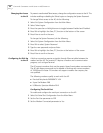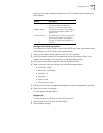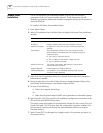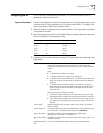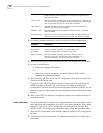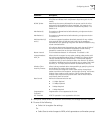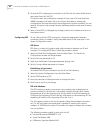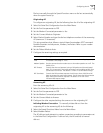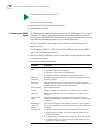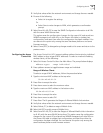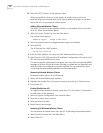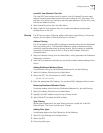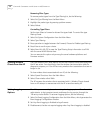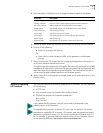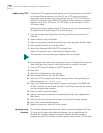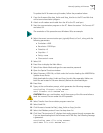
68 CHAPTER 6: CONFIGURING THE AP USING THE ASCII INTERFACE
To hang up, do the following:
1 Select Special Functions from the Main Menu.
2 Select Modem Hangup.
Configuring the SNMP
Agent
An SNMP manager application gains access to the AP SNMP agent if it has the AP
IP address. The agent configures as read-only, read-write or disabled to provide
security when using SNMP. The AP sends specific traps for some conditions. Ensure
the SNMP trap manager recognizes how to manage these traps.
See the 3Com MIB on the Wireless LAN Installation and Utilities disk for
specific entries.
The AP supports SNMP V1, MIB-II and the 3Com.MIB. To configure the SNMP
agent, use the following procedure.
1 Select Set SNMP Configuration from the Main Menu, which generates the SNMP
Configuration window.
2 Configure the settings as required.
:
For automatic dial-out, reset the AP.
Parameter Description
SNMP Agent
Mode
Defines the SNMP agent mode:
■ Disabled—Disables SNMP functions.
■ Read-only—Allows get and trap operations.
■ Read/Write (default)—Allows get, set, and trap operations.
Read-Only
Community
User-defined password string up to 31 characters identifying users with
read-only privileges.
Read/Write
Community
User-defined password up to 13 characters for users with read/write
privileges. Ensure the password used matches the System Password used
to gain access to the System Configuration screen.
Trap IP Address Trap manager IP address.
All Traps Enables or disables all trap operations. The default value is Disabled.
Cold Boot Send a trap to manager when the AP cold boots. The default value is
Disabled.
Authentication
failure
Indicates that community strings other than those specified for the
Read-Only and Read/Write Community were submitted. The default value
is Disabled.
Radio Restart Send a trap to manager for radio restart. The default is value Disabled.
Access Cntrl
Violation
Send a trap to manager when an ACL violation occurs. The default value
is Disabled.
DHCP Change If enabled, this trap generates the following enterprise-specific traps:
■ Gateway Address Change—Indicates the gateway address for the
router has changed.
■ IP Address Change—Indicates the IP address for the AP has changed.
■ IP Address Lease is up—Informs you the IP address leased from the
DHCP server is about to expire.



